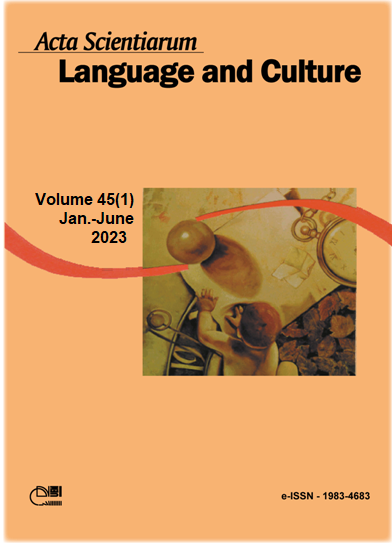The functioning of misconception in the literary discurse: literal and(is) metaphorical in the short story O homem podre by Natália Borges Polesso
Abstract
In this article, affiliated with the Discourse Analysis founded by Michel Pêcheux, we propose to analyze the short story O homem podre, by Natália Borges Polesso (2018), a contemporary Brazilian writer, thinking of literary discourse as the place where the ‘semantically normal world' is suspended and gives space to misconception, absurdity and non-sens. Therefore, we articulate to the theoretical assumptions of D.A the concept of aesthetic revolution, as thought by Jacques Rancière, in order to configure what we call Aesthetic Discursive Formation (ADF), a region of interdiscourse whose prototypical knowledge revolves around the dismantling of the illusion of transparency and unity. The pendulum process between theory and corpus proper to the analytical procedures of discourse theory showed that, in the short story under analysis, the effect of questioning the evidence is related to the equivocal game between the literal, the metaphorical and the metonymic. In the text, the literal arises in the place where the metaphorical is commonly expected, in order to implode the barriers between what would be the ‘legitimate’ meaning of a given word or utterance and the meaning taken in common sense as marginal. This aesthetic procedure captures the real of the language, always hidden in other discursive formations, which unfolds in a transgressive power typical of the artistic and the literary.
Downloads
DECLARATION OF ORIGINALITY AND COPYRIGHTS
I Declare that current article is original and has not been submitted for publication, in part or in whole, to any other national or international journal.
The copyrights belong exclusively to the authors. Published content is licensed under Creative Commons Attribution 4.0 (CC BY 4.0) guidelines, which allows sharing (copy and distribution of the material in any medium or format) and adaptation (remix, transform, and build upon the material) for any purpose, even commercially, under the terms of attribution.
Read this link for further information on how to use CC BY 4.0 properly.




















6.png)









